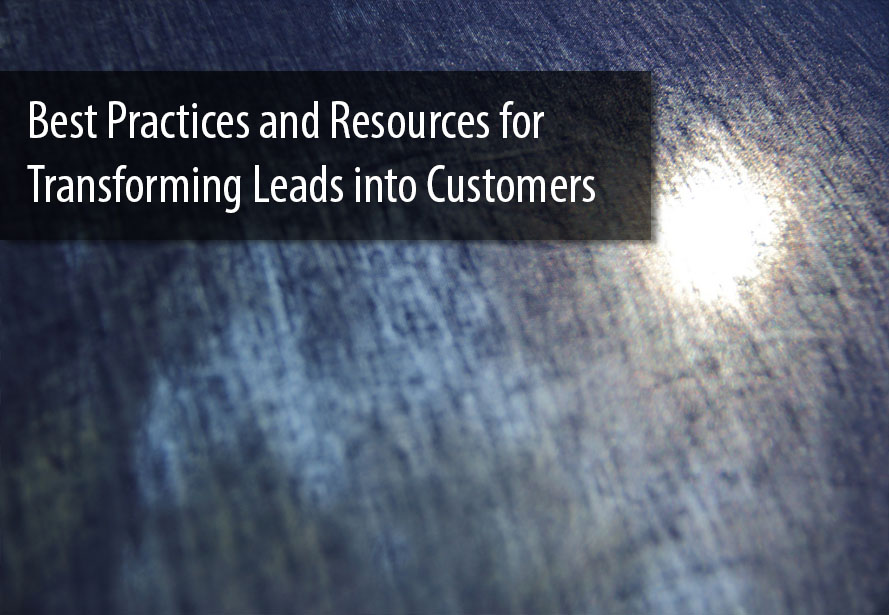The Inbound Marketing Methodology: Stage 3, Close

THE INBOUND MARKETING METHODOLOGY: STAGE 3, CLOSE
Over the last couple of weeks, we’ve been talking about the stages of the inbound marketing methodology.
The first stage is to attract your target audience to you with well-written content that addresses their needs, questions, and goals. This content comes in the form of blogs, which are optimized for keywords relevant to your audience and promoted on social media sites.
The next stage is converting your site visitors into leads by gathering their contact information through calls to action, landing pages, and forms.
Now we’re going to go over what happens next: the close.
The Close Stage of the Inbound Methodology
The close stage is when your lead transforms into a customer, and all your hard work attracting and converting your prospect finally pays off.
But this stage is by no means easy. It can take as many as 13 interactions or “touches” with your lead before he or she makes a purchase decision.
So what’s the best way to keep drawing your lead toward that purchase moment?
Four tools in the close stage help you engage with your prospect during this crucial stage of the buyer’s journey: email marketing, lead scoring, marketing automation, and closed-loop reporting.
Lead Scoring
Even though someone has filled out a form on your site, it doesn’t necessarily mean that person is a “qualified” lead. A qualified lead is someone positioned to become a customer - meaning they have the budget, the immediate need, and the authority to buy.
To help you measure how qualified your leads are, you score them. That’s right, you literally assign them numbers.
You score them based on information they’ve provided on a form or actions they've taken on your website. Examples include:
- Their company type/industry
- Their job title/role
- Their company size
- How many pages of your website they read
- The types of pages they read (BOFU, MOFU, or TOFU)
- Offers they downloaded
You then assign a numerical weight to these criteria (probably on a scale from 1-100). That way you’ll be able to focus on the leads who are the most likely to make a purchase decision.
Email Marketing
The days of email marketing are far from dead. In fact, follow-up emails are powerful tools for engaging your leads after they’ve filled out a form on your site.
This is especially true if you send out a series of emails shortly after that initial contact, when the lead is more likely to be paying attention to messages from your company. You can make your emails even more effective through email segmentation.
Marketing Automation
Marketing automation offers powerful opportunities for sending personalized messages to your leads. Put simply, it allows you to give your lead the information they want when they want it.
Marketing automation nurtures leads by tailoring the marketing messages they receive to fit the particular actions they’ve taken on your site. So if they download a particular eBook, you can automatically follow up with a series of other offers related to the eBook.
Closed-Loop Reporting
Closed-loop reporting means that the sales teams keeps the marketing team up to speed on what happens to the leads. Which leads closed into a sale? Which leads weren't qualified enough?
Technology helps with closed-loop reporting. Connecting your marketing analytics software with your customer relationship management (CRM) software is a great way to generate the data and insights you need for closed-loop reporting.
If you want to plan strategically for the future, then you need closed-loop reporting. Knowing what happens to your leads as they go farther down the sales funnel will help you focus your marketing efforts on the best lead sources and achiceve a higher conversion rate.
Best Practices of the Close Phase
Listen, listen, listen.Today's selling is all about listening to what your customers wants and helping them get it. All the fancy sales messages in the world won't matter if they're the wrong messages at the wrong time.
If you make it your top priority to understand the needs of your buyer, then you’ll be positioned to deliver relevant, highly targeted information that will fit her needs and help solve her pains. That's how you keep your customer coming back for more.
Align your marketing and sales teams. Marketing and sales are no longer siloed. Instead, they have to be in tune with each other and the customer to be truly effective.
Both teams need to have a clear understanding of the ideal buyer personas for your company, and they both need to be tracking the success of each stage of the inbound methodology - attracting new prospects, converting them into leads, and closing them into customers.
Read more about marketing and sales alignment in our post “What is the Difference Between Marketing and Sales?”
Up Next: The Delight Stage
That, in a nutshell, is the close stage of the inbound marketing methodology. It takes time, practice, and patience, but mastering this step is essential. After all-without sales, there is no business.
Now that we've looked at the first three steps of the inbound methodology, we’ve wrapped up this series with the last one - the delight stage.
Editor's Note: This post was originally published in August 2015 and has been updated for accuracy and comprehensiveness.
Image by Mattias via Flickr, licensed under CC BY 2.0.
